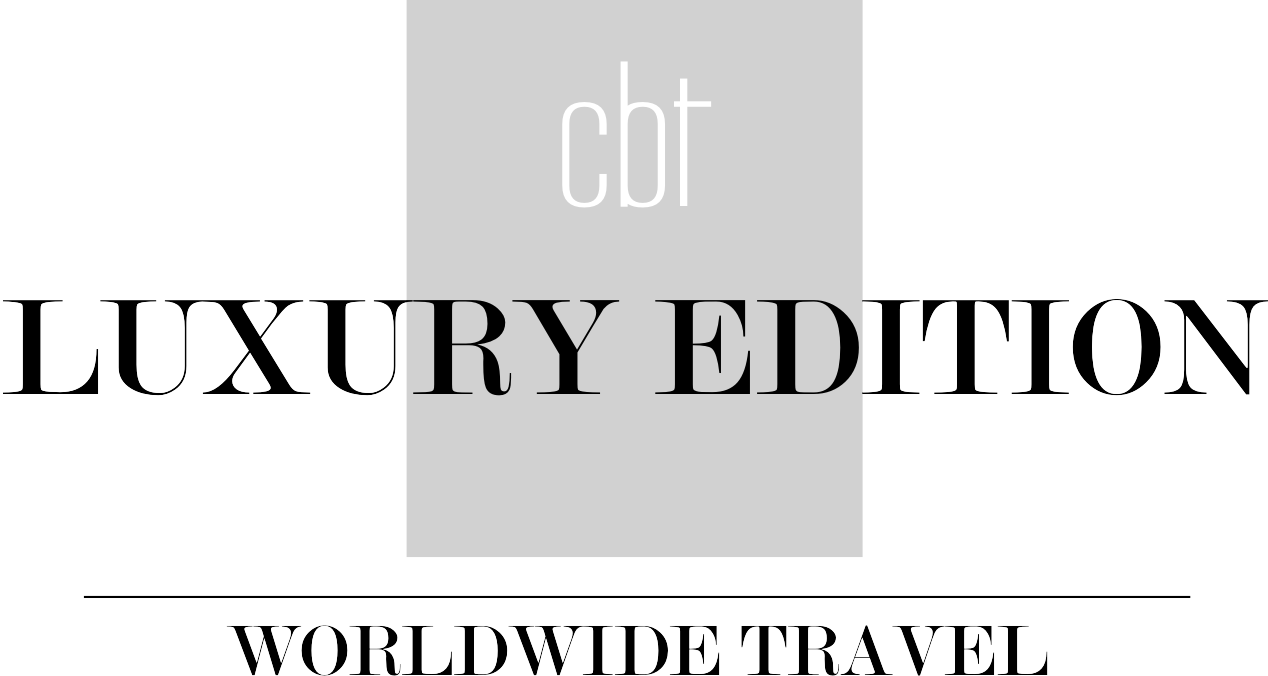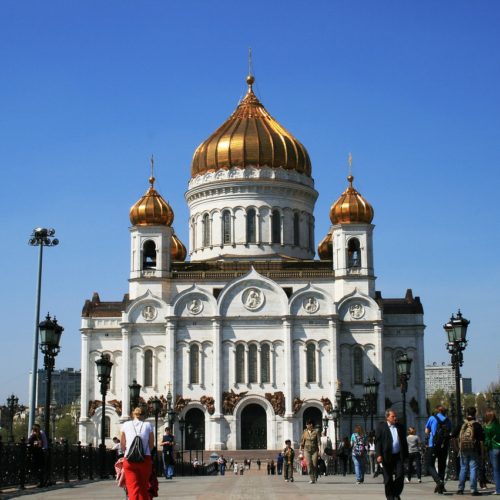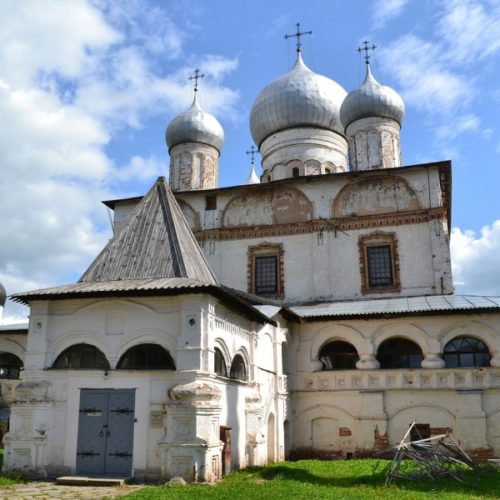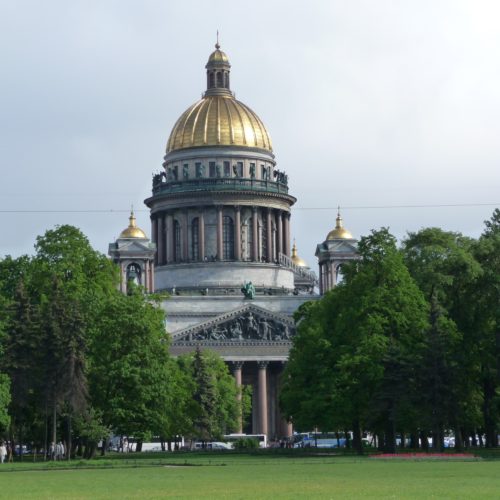ABOUT DR. SONKINA | ITINERARIES | RUSSIAN JOURNEY: THE HIGHLIGHTS | UPCOMING TOURS
People
Away from the imperial opulence it was refreshing to see countryside and the way ordinary people live. Making no claim of understanding the country in two weeks, we nevertheless had the glimpse of a society gripped by a rapid change. Under steely skies of Pskov, a bare-shouldered fiancée is kissing the bride groom, a dove released into sky. In a new society, new customs emerge: padlocks around the railing symbolize love not to be sundered apart. The weddings are usually performed near the river into which the key from the padlock is thrown: the marriage is now sealed. (any number from 1009 to 1027). A stag party staged at night by spectral young girls on the steps of the Bolshoy Theatre in Moscow is another example of changing attitudes. In the Soviet times, you could be arrested just by sitting on the steps of the Bolshoy.
Both St. Petersburg and Moscow is buzzing with excellent cafes and restaurants with cuisines of every persuasion. Gone are the times of scanty food and angry servers: all restaurants as well as shops are privately-owned with waiters impeccably polite and accommodating.
Moscow
When we arrived to Moscow we knew we were in the country’s Capital. Busier, faster, with everything on a larger scale. The Garden Ring (Moscow has a concentric layout) carries 16 lanes of traffic, cars going bumper to bumper. Megalomaniac, like most dictators, Stalin has replaced old wooden houses with inhumanly large avenues studded with high-rises nicknamed by Russians “wedding cakes.” Urban space was meant for huge crowds amassing for propaganda meetings or a march, or a parade, and not for an individual with his or her unique destiny. Moscow never sleeps. A steady wall of pedestrians move in fast pace. Dressed to the nines, mini-skirted women in stilettos expertly maneuver between the paving blocks now replacing the asphalt on many streets. The crowd is young. It’s hard to find anybody over 60 in the downtown core of Moscow. Perhaps, older people don’t venture out, unable to afford posh restaurants and shops? Or maybe they don’t achieve the advanced years at all, life expectancy being only 66? There are fewer beggars in the streets than several years ago, affluence is more visible.The shop windows with most expensive brands on display will challenge the trendiest ones in New York, Rome or Paris.
The new capitalist, wealthy urban Russia produces wealth but it also breeds inequality. With the break-up of the Soviet Union, the impoverished population from former Soviet republics flocks to big cities. The ‘gastarbeitens’ from former Tajikistan and Uzbekistan sweep the streets with old-fashioned brooms; they paint the facades of the mansions; they sell veggies on the markets. Traditionally xenophobic, Russians see that as a threat to their nationhood. When I told one young man (working on his PH. D in history) that we in Canada live in peace with many nationalities and consider it to be the norm, he shrugged his shoulders saying, this is not the way Russians do it. Too many unemployed people from former Asian republics breed crime on the streets.” It is obvious that the new demographical reality is not grappled with yet.
Any strong ideology, once it’s gone, leaves vacuum behind it. Departed Communism left many people with nostalgia for the pre-revolutionary past. Many streets in Moscow regained their pre-Revolutionary names. A new generation of young people has never heard about Gorky Street (now Tverskaya), or Karl Marx metro station (now Okhotny Ryad). Our guide, a well-preserved woman in her 60s, had a palpable tender spot in her heart for all the Romanovs. Her voice trembled with tears as she was describing their tragic end standing next to their gilded tombs in Paul and Peter Cathedral. Nostalgia for the Imperial past enters public discourse on television. There was no irony in panelists’ voices debating the advantages of the restoration of Royalty in Russia and the possible candidates for the post. Red stars are replaced by imperial eagles even in Kremlin, the heart of Moscow. Signs of an unprecedented rise of religiosity are in evidence everywhere, especially in the Capital. Before the revolution, Moscow boasted 1600 churches. Destroyed during the atheist fervour of the 30s, they are now rebuilt. The entrance to the Red Square is crowned with Iverskaya Chapel that had been pulled down in order to let tanks roll to the parades. At night the Red Square looks like a fairy-tale coming alive. The newly built Cathedral of-Christ-the-Saviour is brimming with people. New Moorish-style edifices are added to the ensemble of Sergeev Pasad, a theological centre about 7O km away from Moscow, we visited. The line to kiss the relics of Father Sergey snakes around for meters. Having touched the relics, people get into their MBWs and drive away. Cars are allowed to be parked on the sidewalks, and there are no meters as yet even in the major cities, the idea of paid parking lots not sitting well with Russians. Could it be that this shared communal space is all what’s left from Communism? The frantic gangster-style stage of Capitalism ended in the nineties when the riches of the country were appropriated and divided between the ones who were able to grab them. The society is now visibly more stable.
So do people view their future with hope? The answers vary depending on people’s age and their station in life. The young people see more opportunities and are more optimistic. The older generation feels trapped or sidelined by history. To me, the very fact that each person I talked to had an opinion different from the next, itself is a sign of a much healthier society.
Dr. Marina Sonkina

RECENT PROJECTS





Leave a reply